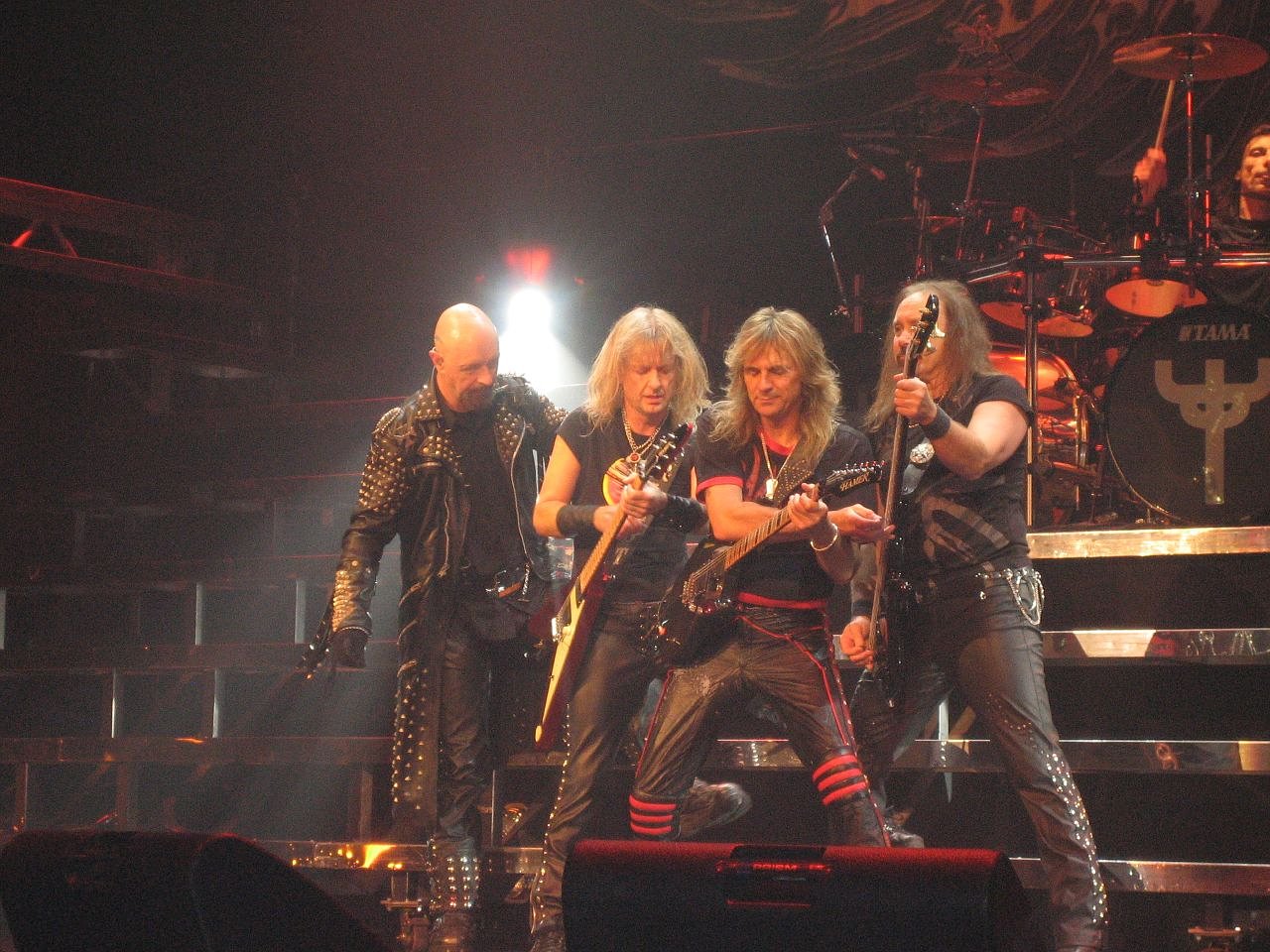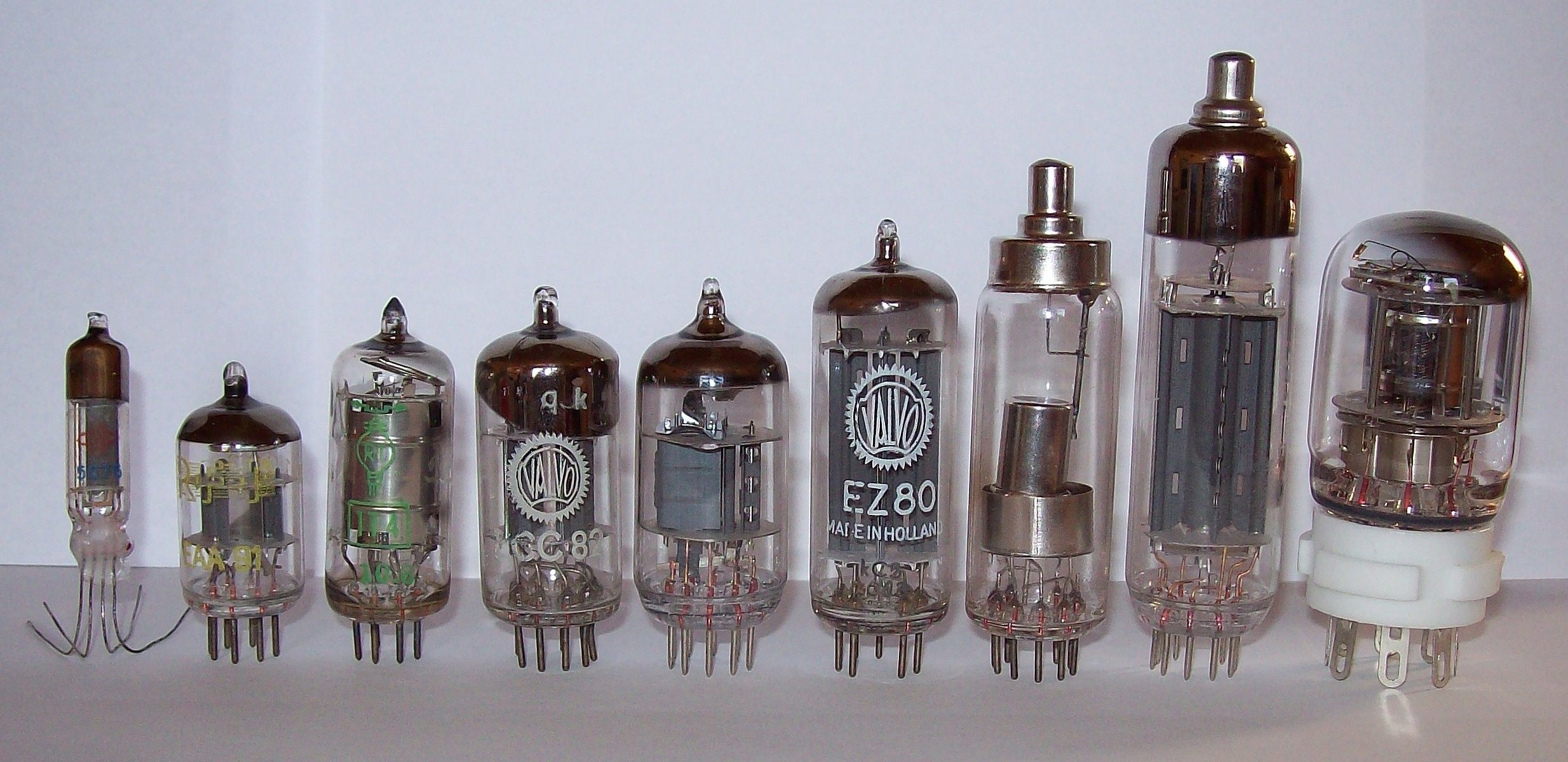|
Marshall JCM800
The JCM800 series (Models 2203, 2204, 2205, and 2210) is a line of guitar amplifiers made by Marshall Amplification. The series was introduced in 1981. Although models 1959 and 1987 had been in production since 1965 and the 2203 and 2204 had been in production since 1975, they were redesigned and introduced as JCM800 amplifiers in 1981. The JCM800 amplifiers became a staple of 1980s hard rock and heavy metal bands. History In 1981, Marshall reached the end of its 15-year distribution deal with Rose-Morris, which had severely limited its potential to sell amplifiers outside England; Rose-Morris tagged 55% onto the sticker price for exported models. The JCM800 was the first series produced after the contract expired. The name comes from Jim Marshall's initials, "J.C.M.", coupled with the meaningless "800" from the number plate on his car. It was later noted that "800" stood for the decade. For example, the JCM900 was released in 1990 and the JCM2000 was released in 2000. The serie ... [...More Info...] [...Related Items...] OR: [Wikipedia] [Google] [Baidu] |
Guitar Amplifier
A guitar amplifier (or amp) is an electronic amplifier, electronic device or system that strengthens the electrical signal from a Pickup (music technology), pickup on an electric guitar, bass guitar, or acoustic guitar so that it can produce sound through one or more loudspeakers, which are typically housed in a wooden speaker enclosure, cabinet. A guitar amplifier may be a standalone wood or metal cabinet that contains only the power amplifier (and preamplifier) circuits, requiring the use of a separate speaker cabinet–or it may be a ''combo'' amplifier, which contains both the amplifier and one or more speakers in a wooden cabinet. There is a wide range of sizes and power ratings for guitar amplifiers, from small, lightweight practice amplifiers with a single 6-inch speaker and a 10-watt amp to heavy combo amps with four 10-inch or four 12-inch speakers and a 100-watt amplifier, which are loud enough to use in a nightclub or bar performance. Guitar amplifiers can also modify ... [...More Info...] [...Related Items...] OR: [Wikipedia] [Google] [Baidu] |
Marshall Amplification
Marshall Amplification is a British company that designs and manufactures music amplifiers, Guitar speaker cabinet, speaker cabinets, and effects unit, effects pedals. Founded in London in 1962 by shop owner and drummer Jim Marshall (businessman), Jim Marshall, the company is based in Bletchley, Milton Keynes, England. The company first began making amplifiers to provide an alternative to expensive, American-made Fender (company), Fender amps, releasing their first model, the Fender Bassman, Bassman-inspired Marshall JTM45, JTM45, in 1963. Following complaints over limitations in amp volume and tone from visitors to Jim Marshall's drum shop, notably Pete Townshend, guitarist for The Who, Marshall began developing louder, 100-watt amplifiers. These early amps were characterized in part by their Plexiglass control plates, leading to models such as the Marshall 1959, 1959 Super Lead (released in 1965) being popularly known as "Plexis." Their adoption by guitarists like Townshen ... [...More Info...] [...Related Items...] OR: [Wikipedia] [Google] [Baidu] |
Jim Marshall (businessman)
James Charles Marshall (29 July 1923 – 5 April 2012) known as The Father of Loud or The Lord of Loud, was an English businessman and pioneer of guitar amplification. His company, Marshall Amplification, founded in 1962, has created equipment that is used by some of the biggest names in rock music, producing amplifiers with an iconic status.Guitar amplifier pioneer Jim Marshall dies aged 88 Reuters. Retrieved 5 April 2012 Described by '''' as a "charismatic amplifier innovator and music entrepreneur", Marshall was awarded an OBE at |
Vehicle Registration Plate
A vehicle registration plate, also known as a number plate (British, Indian and Australian English), license plate (American English) or licence plate (Canadian English), is a metal or plastic plate attached to a motor vehicle or trailer for official identification purposes. All countries require registration plates for commercial road vehicles such as cars, trucks, and motorcycles, for hire. Whether they are required for other vehicles, such as bicycles, boats, or tractors, may vary by jurisdiction. The registration identifier is a numeric or alphanumeric ID that uniquely identifies the vehicle or vehicle owner within the issuing region's vehicle register. In some countries, the identifier is unique within the entire country, while in others it is unique within a state or province. Whether the identifier is associated with a vehicle or a person also varies by issuing agency. There are also electronic license plates. Legal requirements In Europe, most governments requi ... [...More Info...] [...Related Items...] OR: [Wikipedia] [Google] [Baidu] |
Hard Rock
Hard rock or heavy rock is a heavier subgenre of rock music typified by aggressive vocals and Distortion (music), distorted electric guitars. Hard rock began in the mid-1960s with the Garage rock, garage, Psychedelic rock, psychedelic and blues rock movements. Some of the earliest hard rock music was produced by the Kinks, the Who, the Rolling Stones, Cream (band), Cream, Vanilla Fudge, and the Jimi Hendrix Experience. In the late 1960s, bands such as Blue Cheer, the Jeff Beck Group, Iron Butterfly, Led Zeppelin, Creedence Clearwater Revival, Golden Earring, Steppenwolf (band), Steppenwolf, Grand Funk, Free (band), Free, and Deep Purple also produced hard rock. The genre developed into a major form of popular music in the 1970s, with the Who, Led Zeppelin and Deep Purple being joined by Black Sabbath, Alice Cooper, Aerosmith, Kiss (band), Kiss, Queen (band), Queen, AC/DC, Thin Lizzy and Van Halen. During the 1980s, some hard rock bands moved away from their hard rock roots and m ... [...More Info...] [...Related Items...] OR: [Wikipedia] [Google] [Baidu] |
Heavy Metal Music
Heavy metal (or simply metal) is a Music genre, genre of rock music that developed in the late 1960s and early 1970s, largely in the United Kingdom and United States. With roots in blues rock, psychedelic rock and acid rock, heavy metal bands developed a thick, monumental sound characterized by distortion (music), distorted guitars, extended guitar solos, emphatic Beat (music), beats and loudness. In 1968, three of the genre's most famous pioneers – British bands Led Zeppelin, Black Sabbath and Deep Purple – were founded. Though they came to attract wide audiences, they were often derided by critics. Several American bands modified heavy metal into more accessible forms during the 1970s: the raw, sleazy sound and shock rock of Alice Cooper and Kiss (band), Kiss; the blues-rooted rock of Aerosmith; and the flashy guitar leads and party rock of Van Halen. During the mid-1970s, Judas Priest helped spur the genre's evolution by discarding much of its blues influence,Walser (1 ... [...More Info...] [...Related Items...] OR: [Wikipedia] [Google] [Baidu] |
Effect Unit
An effects unit, effects processor, or effects pedal is an electronic device that alters the sound of a musical instrument or other audio source through audio signal processing. Common effects include distortion/overdrive, often used with electric guitar in electric blues and rock music; dynamic effects such as volume pedals and compressors, which affect loudness; filters such as wah-wah pedals and graphic equalizers, which modify frequency ranges; modulation effects, such as chorus, flangers and phasers; pitch effects such as pitch shifters; and time effects, such as reverb and delay, which create echoing sounds and emulate the sound of different spaces. Most modern effects use solid-state electronics or digital signal processors. Some effects, particularly older ones such as Leslie speakers and spring reverbs, use mechanical components or vacuum tubes. Effects are often used as stompboxes, typically placed on the floor and controlled with footswitches. They may als ... [...More Info...] [...Related Items...] OR: [Wikipedia] [Google] [Baidu] |
Reverb
In acoustics, reverberation (commonly shortened to reverb) is a persistence of sound after it is produced. It is often created when a sound is reflected on surfaces, causing multiple reflections that build up and then decay as the sound is absorbed by the surfaces of objects in the space – which could include furniture, people, and air. This is most noticeable when the sound source stops but the reflections continue, their amplitude decreasing, until zero is reached. Reverberation is frequency dependent: the length of the decay, or reverberation time, receives special consideration in the architectural design of spaces which need to have specific reverberation times to achieve optimum performance for their intended activity. In comparison to a distinct echo, that is detectable at a minimum of 50 to 100 ms after the previous sound, reverberation is the occurrence of reflections that arrive in a sequence of less than approximately 50 ms. As time passes, the amplitude ... [...More Info...] [...Related Items...] OR: [Wikipedia] [Google] [Baidu] |
Celestion
Celestion is a British designer and exporter of professional loudspeakers. History Origins What became Celestion was started in Hampton Wick (suburban London) in 1924. Cyril French and his three brothers had taken over a plating works and established the Electrical Manufacturing and Plating Company. They were listed as "electrical instrument manufacturers". Eric Mackintosh approached Cyril French for assistance with improving a new loudspeaker he had already filed a patent for (British Patent No. 230,552 on 15 December 1923, issued 16 March 1925). The BBC had started their programme in November 1922 and was building up new senders, public interest in radio broadcasting grew rapidly. But listeners still needed to connect either earphones or gramophone horns to the first radio receivers. Installing a loudspeaker sensitive enough in decorative cabinets quickly made these sought-after pieces of furniture in the roaring twenties. French and Mackintosh perfected the design, the m ... [...More Info...] [...Related Items...] OR: [Wikipedia] [Google] [Baidu] |
EL34
The EL34 is a thermionic vacuum tube of the power pentode type. The EL34 was introduced in 1955 by Mullard, which was owned by Philips. The EL34 has an octal base (indicated by the '3' in the part number) and is found mainly in the final output stages of audio amplification circuits; it was also designed to be suitable as a series regulator by virtue of its high permissible voltage between heater and cathode and other parameters. The American RETMA tube designation number for this tube is 6CA7. The USSR analog was 6P27S (Cyrillic: 6П27C). Specifications In common with all 'E' prefix tubes, using the Mullard–Philips tube designation, the EL34 has a heater voltage of 6.3 V. According to the data sheets found in old vacuum tube reference manuals, a pair of EL34s with 800 V plate voltage can produce 90 watts output in class AB1 in push–pull configuration. However, this configuration is rarely found. One application of this type was in "Australian Sound" public address amplifier ... [...More Info...] [...Related Items...] OR: [Wikipedia] [Google] [Baidu] |
Vacuum Tube
A vacuum tube, electron tube, thermionic valve (British usage), or tube (North America) is a device that controls electric current flow in a high vacuum between electrodes to which an electric voltage, potential difference has been applied. It takes the form of an evacuated tubular envelope of glass or sometimes metal containing electrodes connected to external connection pins. The type known as a thermionic tube or thermionic valve utilizes thermionic emission of electrons from a hot cathode for fundamental Electronics, electronic functions such as signal amplifier, amplification and current Rectifier, rectification. Non-thermionic types such as vacuum phototubes achieve electron emission through the photoelectric effect, and are used for such purposes as the detection of light and measurement of its intensity. In both types the electrons are accelerated from the cathode to the anode by the electric field in the tube. The first, and simplest, vacuum tube, the diode or Flem ... [...More Info...] [...Related Items...] OR: [Wikipedia] [Google] [Baidu] |








